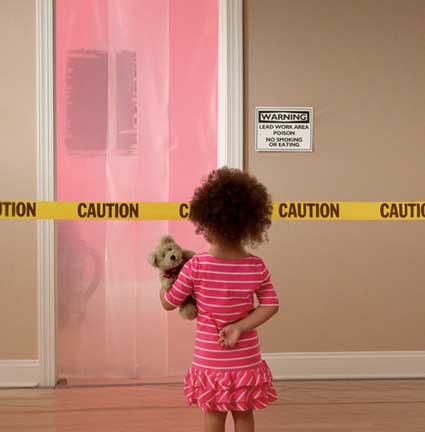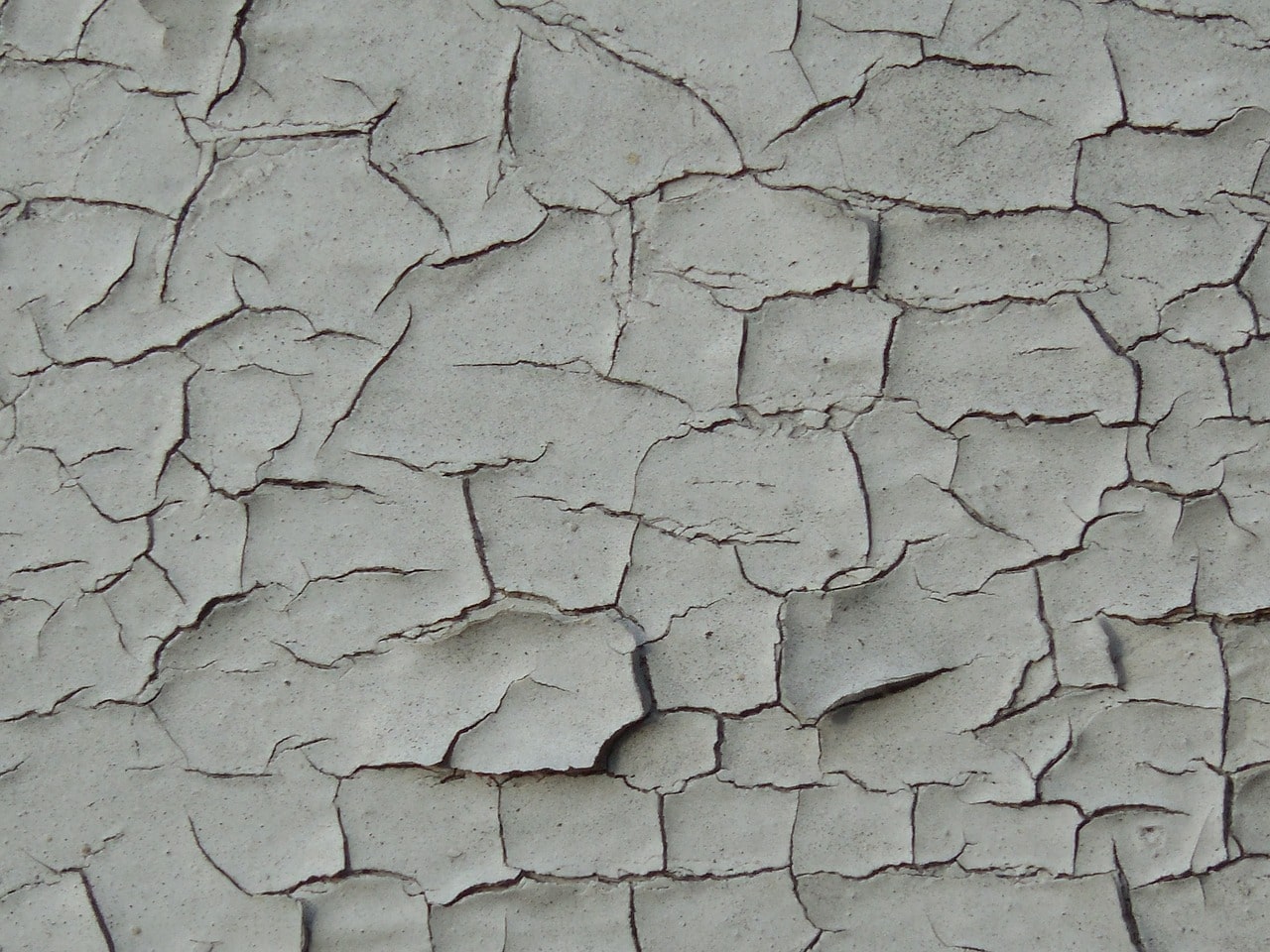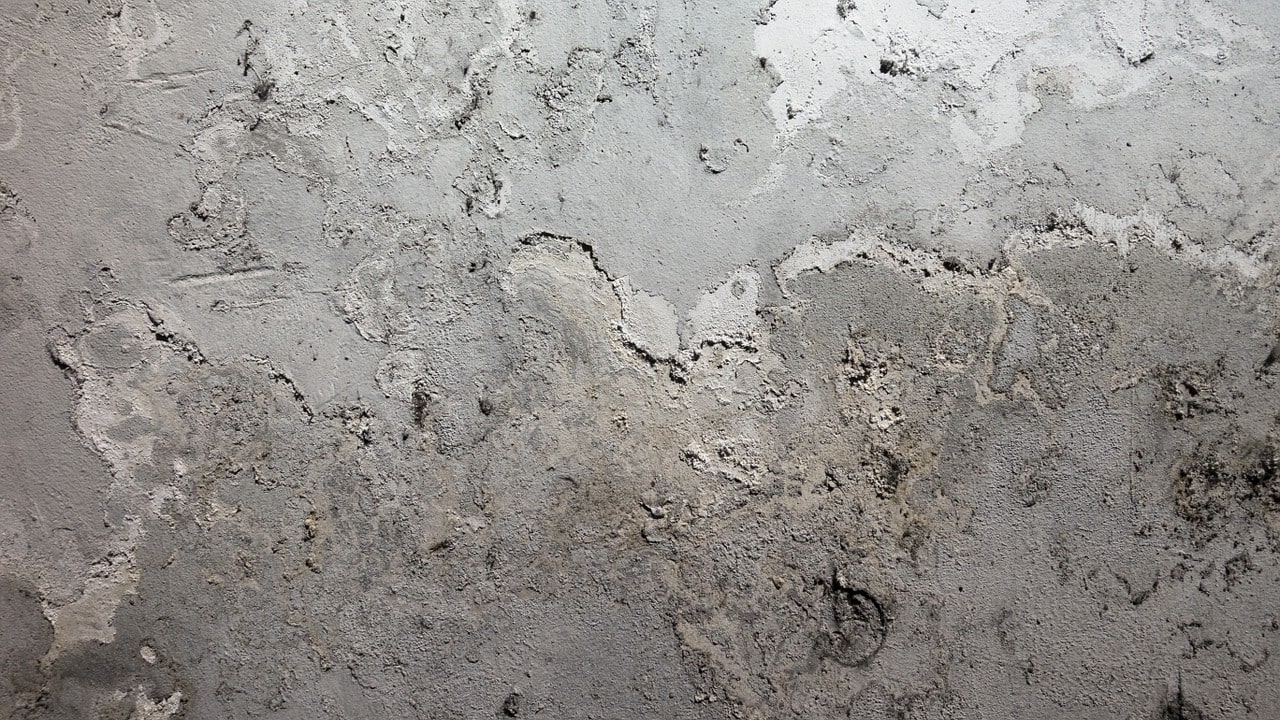If your home, commercial space, or apartment building was built before 1978, chances are that the old underlying paint contains lead.
You need to take special precautions if you are repairing or remodeling your home, because exposure to lead-based paint, lead dust, or paint chips is a health hazard.
In addition, State of California regulates the disturbance of Lead and requires the hiring of a California Dept of Public Health-certified inspector (such as Mailman Environmental) to collect samples and send them to an Environmental Protection Agency (EPA) accredited lab.

As a family owned company Mailman Environmental understands how critical it is to protect your family. Identifying Lead-Based paints can be critical to the safety of our loved ones.
What health problems does Lead cause?
Lead is a highly toxic metal that may cause a wide range of hard to diagnose health problems, especially in younger children. When lead is absorbed into the body it can cause damage to the brain and vital organs, like the kidneys, nervous system and blood.
Lead exposure may also lead to and excasberate behavioral problems, learning disabilities, seizures and in some extreme cases, death. Symptoms of lead poisoning may include headaches, stomachaches, nausea, tiredness and irritability. Children who are lead poisoned may show little or no symptoms.
How do I know if I have Lead-Based Paint?
The only way to be certain is through an inspection by a CDPH Certified Inspector and EPA approved Lab test. Some images are included below of some of the common appearances of older, exposed Lead-Based Paint. Unfortunately there is no sure way to be able to identify it simply by appearance and condition.


Inside and outside the home, deteriorated lead-paint mixes with household dust and soil and may be tracked in. Children may become lead poisoned by:
- Putting their hands or other lead-contaminated objects into their mouths
- Eating paint chips found in homes with peeling or flaking lead-based paint
- Playing in lead-contaminated soil
- Take a moment to look at the brochure provided by HUD “Protect Your Family from Lead in Your Home” for additional information
What should I do?
First, don’t panic! If you are concerned for your health or planning a renovation Mailman Environmental can perform the test to determine where Lead is present, and assist you in working with an Abatement company to have it safely removed.
For general, preventative tips the United States Department of Housing and Urban Development has provided the following information.
- Wipe down flat surfaces, like window sills, with a damp paper towel and throw away the paper towel,
Mop smooth floors (using a damp mop) weekly to control dust,
Take off shoes when entering the house - Vacuum carpets and upholstery to remove dust,
- If possible, use a vacuum with a HEPA filter or a “higher efficiency” collection bag,
- Pick up loose paint chips carefully with a paper towel and discard in the trash, then wipe the surface clean with a wet paper towel,
- Take precautions to avoid creating lead dust when remodeling, renovating or maintaining your home,
- Test for lead hazards by a lead professional. (Have the soil tested too).
For your child:
- Have your child’s blood lead level tested at age 1 and 2. Children from 3 to 6 years of age should have their blood tested, if they have not been tested before and:
– They live in or regularly visit a house built before 1950,
– They live in or regularly visit a house built before 1978 with on-going or recent renovations or remodeling
– They have a sibling or playmate who has or did have lead poisoning - Frequently wash your child’s hands and toys to reduce contact with dust,
- Use cold tap water for drinking and cooking
- Avoid using home remedies (such as azarcon, greta, pay-loo-ah, or litargirio) and cosmetics (such as kohl or alkohl) that contain lead
- Certain candies, such as tamarindo candy jam products from Mexico, may contain high levels of lead in the wrapper or stick. Be cautious when providing imported candies to children
Some tableware, particularly folk terra cotta plates and bowls from Latin America, may contain high levels of lead that can leach into food. - Certain toys, typically imports, are also being shown to have high levels of lead.
“LEAD SPEAK” – A BRIEF GLOSSARY
Lead-Based Paint: Paint or other surface coatings that contain lead equal to or exceeding 1.0 milligram per square centimeter or 0.5 percent by weight or 5,000 parts per million (ppm) by weight.
Lead-Based Paint Hazards: Any condition that causes exposure to lead from dust-lead hazards, soil-lead hazards, or lead-based paint that is deteriorated or present in chewable surfaces, friction surfaces, or impact surfaces, and that would result in adverse human health effects.
Visual Assessment: A visual inspection of interior and exterior surfaces to identify specific conditions that may be lead-based paint hazards. A visual inspection does not identify lead-based paint. The assessment may be performed by a person trained in visual assessment. Training for visual assessment is available on HUD’s website at www.hud.gov/offices/lead.
LEAD HAZARD EVALUATION
Paint Testing: Testing of specific surfaces, by XRF (x-ray fluorescence) or lab analysis, to determine the lead content of these surfaces, performed by a certified lead-based paint inspector or certified risk assessor.
Lead-Based Paint Inspection: A surface-by-surface investigation to determine the presence of lead-based paint and the provision of a report explaining the results of the investigation. It is performed by a certified paint inspector or risk assessor.
Risk Assessment: A comprehensive evaluation for lead-based paint hazards that includes paint testing, dust and soil sampling, and a visual evaluation. The risk assessment report identifies lead hazards and appropriate lead hazard reduction methods. A certified risk assessor must conduct the assessment.
Lead Hazard Screen: A limited risk assessment activity that can be performed instead of a risk assessment in units that meet certain criteria (e.g. good condition). The screen must be performed by a certified risk assessor. If the unit fails the lead hazard screen, a full risk assessment must be performed.
Clearance Examination: Clearance is performed after hazard reduction, rehabilitation or maintenance activities to determine if a unit is safe for occupancy. It involves a visual assessment, analysis of dust samples, and preparation of report. The certified risk assessor, paint inspector, or lead sampling technician (called a clearance technician in the HUD regulation) performing clearance must be independent from the entity/individual conducting paint stabilization or hazard reduction.
LEAD HAZARD REDUCTION
Paint Stabilization: An interim control method that stabilizes painted surfaces and addressed the underlying cause of deterioration. Steps include repairing defective surfaces, removing loose paint and applying new paint.
Interim Controls: Set of measures to temporarily control lead-based paint hazards. Interim control methods must be completed by qualified workers using safe work practices. Follow-up monitoring is needed.
Standard Treatments: A complete set of interim control methods that when used together temporarily control all potential lead hazards in a unit. Because they address all conditions, a risk assessment or other evaluation is not needed. Standard treatments must be completed by qualified workers using safe work practices. As with interim controls, follow-up monitoring is needed.
Do you have concerns about your own residence, school, or business? For more information, or to schedule a Mold Inspection, Lead-Based Paint Inspection, Radon or Asbestos Inspection in Santa Clarita, the Antelope Valley, Ventura County, or Greater Los Angeles area you can submit an online request, call us (661) 219-5160 or email request to [email protected]
About Mailman Environmental
Mailman Environmental is Southern California’s leading consultant for indoor air quality testing, asbestos, mold, lead, VOCs, formaldehyde, soot, char, ash, and smoke damage, particulates, and other chemicals. Mailman Environmental and our contractors and vendors maintain an extensive list of certifications and accreditations from the State of California, Department of Public Health, and numerous professional organizations. Mailman Environmental proudly serves all of Southern California including Santa Clarita, Antelope Valley including Palmdale and Lancaster, Ventura County, San Fernando Valley, and the Greater Los Angeles area.
Sources:
https://www.hud.gov/program_offices/healthy_homes/healthyhomes/lead
